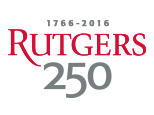This activity has two parts and two corresponding goals: (1) to introduce the idea of a scientific model and develop a working definition of models, and (2) to develop a set of criteria for what makes a good model. In the first part of the activity, students review a set of representations of volcanoes that are purported to explain why volcanoes erupt, and they evaluate whether these representations are scientific models or not. These evaluations serve as the springboard for a discussion about what a scientific model is. In the second part of the activity, students compare and contrast two models for each of several different phenomena (butterfly anatomy, food webs, outbreak of food poisoning, the water cycle, photosynthesis, global warming). Through peer discussion of which is the better model, student groups develop a list of features of good models. A follow-up class discussion results in a class list of criteria for good models, which is publicly displayed and used throughout the year.



